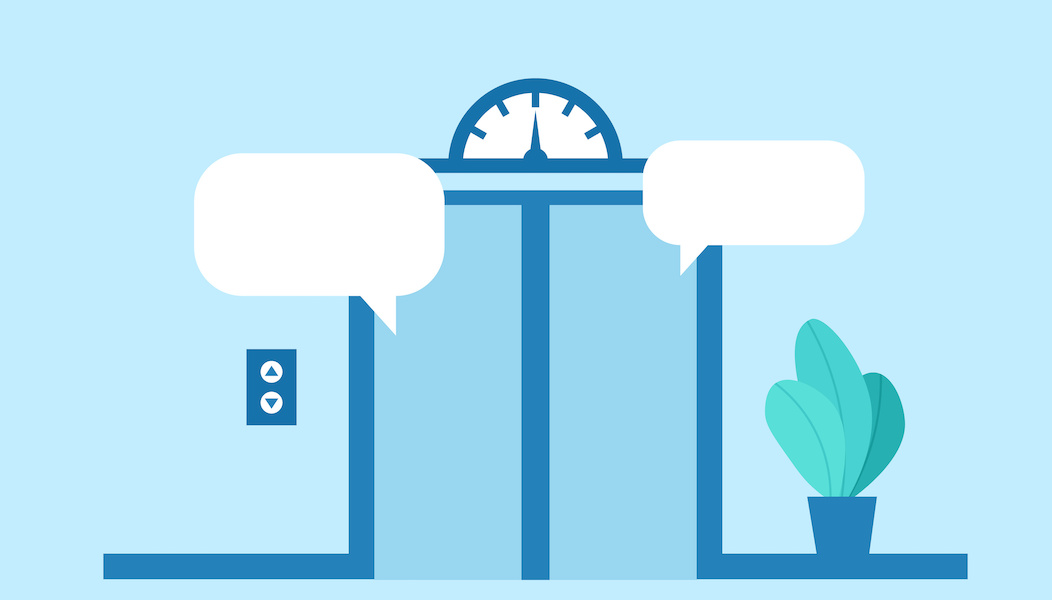Your Professional Elevator Pitch
By Christina Stokes
February 2023
When you work in public relations, making a pitch to clients, reporters and colleagues is second nature for you. However, even the strongest PR professionals can fall flat when pitching themselves during an interview.
In earlier issues of S&T, I wrote about telling your career story and creating your personal brand. This time, I will zero in on refining the professional elevator pitch you deliver during a job interview’s first minute or so.
In an interview scenario, a solid elevator pitch includes five key components: an introduction, a summary of what you do, your value proposition, a specification of what you want and a closing. The interviewer sits down and says to you: “Tell me about yourself.” The good news is that you don’t choke because you’re prepared for this moment! Let’s break down each of the elements above in detail (with some examples from my own pitch).
Introduction
This is the briefest part of the process, and it’s self-explanatory. Introduce yourself to the interviewer, and create a pace here. If you start off speaking calmly and clearly, then you will avoid picking up speed and rushing throughout your pitch.
Example: Hi, my name is Christina Stokes. It’s great to meet you. Thank you so much for speaking with me today!
Summary — Here, you will provide a simple overview of what you do and where you worked most recently. You could also mention any degree or relevant certification you possess here. You should be proud of your abilities and accomplishments. Being confident is a positive thing, as long as you don’t cross the line into arrogance.
Example: For over a decade, I’ve led the talent acquisition efforts of PR firms, most recently with RUBENSTEIN (nearly six years now). My work includes full life-cycle recruiting, DE&I efforts, employer branding, employee relations and more!
Value Proposition
This is where you will differentiate yourself from your peers (i.e., other candidates applying for the position). Why should you be considered for the job? If you have a passion for the field or bring something to the table that others may not, then mention that to the interviewer.
Example: I’m well connected and invested in the PR industry, and I take a lot of pride in my work and love to be a forward-facing representative of my workplace. Recruiting is the sort of job where you do have the power to change lives for the better. I put time into understanding who a candidate is, in addition to their skills and experiences, to see how that aligns with the hiring needs, culture and overall goals of my firm.
Goal
Think about why this job (or specific company) could be the best next step for your career, and share that with the interviewer. Are you seeking an opportunity for advancement, mentorship, or something else? It’s OK to be a bit more general here since this is only the first minute of your conversation, and later on, you will have the opportunity to elaborate further.
Example: The role you’re looking to fill resonates with me — not only because of the distinction of your organization but also because I see it as an opportunity to continue learning and growing in my profession.
Closing
Your closing can be several things, ideally a call to action, depending on the situation. You could give the interviewer an opening to introduce themselves next. You could also offer the interviewer an opportunity to probe into some of what you highlighted. Read the room (or Zoom) and let this part flow.
Example 1: I’m excited to go more in-depth on my experiences and abilities with you. I’d love to hear about you and your role in the organization, too!
Example 2: That’s me in a nutshell! Please let me know where you’d like me to elaborate at any point in our conversation.
Your elevator pitch should always be a succinct introduction of “professional you.” It should also sound natural and spontaneous — overly rehearsed never lands well. Practice with a friend and get some honest feedback.
If you take anything away from this article, then let it be this: Do not drone on for several minutes without breaking to let the interview interject, ask questions and create a fluid conversation.
Good luck!



